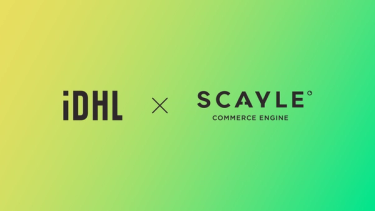Insight13 min read
The challenges of going digital in the social housing sector and how to overcome them
Tue Dec 05 2023 | Marketing Team

- Insight
- Web & eCommerce
- Home & Garden
Tags
The shift to digital is unavoidable, no matter what industry you sit in. While some sectors found themselves propelled into the online space thanks to the pandemic, others such as the social housing sector have been navigating the digital landscape for a long time. Digital access to services is something that the social housing sector has been providing for well over a decade but despite this, they still face many hurdles online.
Housing Associations (HAs) have struggled to fully harness the potential of digital transformation. With issues ranging from lack of investment to platforms that simply cannot support their tenants, HAs must now look at how to propel their digital offering into the future. But, this isn’t as simple as creating a brochureware site and clicking launch, HAs have several challenges they must address when creating their websites.
In this article, we discuss common challenges Housing Associations face and how best to tackle them.
1) Managing stakeholders and users
With any website project, how you manage your stakeholders can impact the overall success of your site. HAs are no different and, perhaps, even more complex than most web projects.
Internal stakeholders play a pivotal role in your website build and alongside them, HAs have several different groups of people to cater to. We’ve listed some of the key users HAs must consider throughout their web project:
- Influencers: Local and National Government, policy makers, the HCAand other third sector bodies.
- Customers: Tenants, leaseholders, other residents and property buyers.
- Staff: Internal teams and senior leadership.
- Partners: Housebuilders, maintenance contractors and other charitable bodies
Having so many expectations, opinions and needs to manage can waylay the progress of your project and leave you with a site that misses the mark across the board. From stretched budgets to project scope creep, failing to define who your key stakeholders are and their roles within your website build can have hugely detrimental effects on your end result.
Solution
Before you start your website project, it’s imperative to have a team in place with clear and definitive roles and responsibilities. Once your key members are identified, you need to create a roadmap with set milestones and assign these to people within the team.
As well as managing your internal stakeholders, you must consider how those external to your team play a role in your website project. From local authorities to your tenants, you need to consider their involvement from the get-go. Incorporating user testing and feedback within your plan is one way to ensure your project is answering the needs of your key audiences and not just catering to the vision of your own team.
2) Funding core objectives
Cutbacks to funding post-austerity have left Housing Associations looking at new ways to bring in alternative revenue streams to support their core objective, social housing. Through diversifying their projects, HAs can use this surplus income to support social housing. There are a number of ways HAs can achieve this, including property development to private shared ownership sales.
This means that alongside their digital offering for their core purpose, social housing, HAs likely need several websites each catering to a different need. Each website will have its own purpose and goals, meaning features, functionalities and website design need to be addressed separately.
Creating one new website can feel like a momentous task, so adding two or more to the fray often leaves organisations feeling overwhelmed. With each website having varying propositions and purposes, HAs have to manage several, often complex, projects all at once.
Solution
Working with a skilled website development agency who have experience in the social housing sector is a must. Understanding the nuances of the industry, the challenges and the value of these website projects is paramount when delivering sites that will support HAs journey into digital.
At NetConstruct, we have worked with HAs to develop their community housing sites and create websites for their other ventures. Through our extensive scoping process, workshops and continuous communication with clients, we ensure our websites fully cater to their briefs.
Previously, we have worked with Peabody to develop a site to support their growth plans and built a site to increase the private sales arm of their business. On the other side of the coin, we worked with Watford Housing Community to create their social housing website. Having experience in a variety of projects delivered by HAs, we understand how each must be approached differently to support HAs overall, long-term, goals.
3) Bridging the communication gap
Communication between tenants and social housing landlords has long been a source of complaint for residents. The issue of raising repairs and maintenance problems and the status of these being rectified has often left tenants feeling in the dark about important issues in their homes. Due to an increased demand for social housing and supply not keeping up, HAs have been left trying to manage a growing pool of residents without necessarily growing their staff at the same rate.
This additional pressure on their teams and backlog of tenant communications has left both sides of the table looking for ways of working to improve, and alleviate, the situation.
Solution
Embracing digital has allowed HAs to open new channels of communication between landlords and tenants. HAs can lean on the connectivity between their website and internal systems to create a space online for their users to better manage their homes, and any associated issues. This can include:
- Requesting repairs
- Logging any problems
- Paying their rent
- Checking balances
- Reporting ASB (Anti-Social Behaviour)
HAs can empower their tenants and give them a voice online by creating a 'self-service' approach to their sites. A well-executed portal not only benefits tenants/users but enables landlords and housing associations to streamline their process and have a much clearer overview of their tenants' wants and needs.
4) Ensuring accessibility
Accessibility is at the forefront of every business strategy. Ensuring that you provide accessible information to your audience has never been so important.
This is particularly true for HAs, who have a diverse and wide audience range. From age to disability, HAs must consider how to effectively reach, and engage, with people from all walks of life. This should be a key focus from the offset of your web project, not an afterthought to add on just before launch. But with so many things to address, how can you balance accessibility for all and the functionality, and look, of your site?
Solution
Making your website accessible doesn’t need to be a challenge. But it does need to be a priority from the get-go. Starting with design and user experience, ensuring your site is built with accessibility in mind means you can integrate best practice into your early design ideas. By implementing accessibility features early on, you can build an attractive and functional site around them.
Alongside design, the structure and navigation of your website need to be user-friendly for those who use assistive technology when accessing your site. ARIA (Accessible Rich Internet Applications), are attributes you can add to your HTML. The attributes provide the user with information about how the site works and help to navigate your site. This is especially useful for pieces of information that won’t translate to technology such as a screen reader like visual elements that don’t provide any further information or use. ARIA can tell the technology this element isn’t useful and can be bypassed.
When creating an accessible website, the importance of testing can’t be understated. There are several tools available for us to test your site’s accessibility, highlighting any areas that need improvement. But user testing should still be employed, providing you with real insight into the highs and lows of your website’s accessibility.
5) Addressing sustainability
Sustainability isn’t a buzzword, or something HAs might look to address in the future. Sustainability and how HAs can improve on this is a vital part of their ongoing strategy. From ESG (Environmental, Social & Governance) reports to their drive to cut emissions by 2050, HAs must demonstrate they are actively looking to increase their overall sustainability. And as they move more of their core offering online, how their digital presence impacts the environment is not something they can ignore.
Although digital has often been considered ‘greener’, thanks to its invisible nature, websites do have an environmental impact and this needs to be addressed by HAs as they become more digitally focused.
Solution
Digital is going nowhere and not being online isn’t an option in the day-to-day world. But how can brands minimise the effect their website has on the planet?
There’s no clear-cut, or definitive answer. Like everything we do in life, our actions leave a footprint. But HAs can look to reduce their overall impact through various measures:
- 1Building a site with sustainability in mind: From design to functionality, there are several changes you can make to your website that help create a more sustainable site. We offer sustainability audits to help brands address issues on their existing sites. But, for new builds, this can be incorporated into your design from the word go.
- 2Your partners matter: A website doesn’t exist in a silo. With a multitude of third-party plugins and partners feeding into your website, you must consider what their environmental impact is and how they as a business are addressing sustainability. At NetConstruct, we have asked our partners to register with The Green Web Foundation. This independent non-profit assesses the impact of a provider or platform's business and provides ‘verified green hosting’ status to those who demonstrate their commitment to sustainability.
While the impact of your website on the environment shouldn’t be underplayed and should be a key consideration for HAs, the positive implications of a well-constructed website can’t be understated. By creating a site that provides your tenants with more valuable information and support at their fingertips, HAs can prevent unnecessary callouts/ visits to tenants.
By supplying tenants with in-depth information and support, such as detailed ‘how-to’ videos, HAs can reduce the need for unnecessary journeys to homes for the same information to be relayed in person. This can help to reduce the overall CO2 impact of HAs and save time and money to boot.
Moving to a digital future with an experienced website development agency
Whether you’re at the start of your digital transformation or looking to build on what you have already started, the support of a dedicated agency can only serve to support your web project.
We have over 20 years of experience helping brands from all sectors excel in the digital space. No matter what difficulties or challenges you may face as you evolve online, we can provide the tools and support you need to achieve your goals.
If you’re in the social housing sector and want to continue supporting your users online, get in touch today.


